
CHINESE FENG SHUI
DAOZHAN: Divination Resource for Daoist Calculation; (6 books within 1 text; Book 3: TAOIST GEOMANCY: Orientation of Environmental Harmony)

Geomancy
is the terrestrial equivalent of astrology, examining the earths topological
affect upon winds and waters. Geomancy analyzes space and enhances earth fortune, while astrology analyzes time and reveals
heaven fortune. It is the science of putting human habitats and activities into
harmony with the visible and invisible surrounding world.
Geomancy
recognizes cosmic power points, or energy vortexes that penetrate the earth's
surface. Astrological influences on the seasons (wind) and water source
locations may be utilized in geomancy in order to propagate better architecture
and agriculture. Becoming familiar with these influential patterns of wind and
water invite successful insights into foretelling future cycles seen in nature
(used in Yijing divination and Tarot). (Pennick)
Feng
=
wind is the elemental vehicle of heaven
Shui
= water is the elemental vehicle of earth
Feng
Shui
= wind water = heaven and earth interacting in environmental harmony
Objectives:
The simple objective is to
treat one's environment in order to increase one's fortune, or connection with
nature's source. This is done best by combining aggressive and passive methods
of remedy.
Aggressive: Increase energy in auspicious direction
to bring good fortune
Passive: Deflect or remedy dangers inherent in an
inauspicious direction
Considerations:
There are various scopes that can be adopted when
considering the quality, or compatibility of a place that can enhance personal
energy and relationships.
Site: a place, plot of land, or building
being investigated (history)
Location: surroundings visible from the site
(roads, rivers)
Environment: refers to the qualities of the
location determined by natural or human-made features (neighboring influence)
Orientation: refers to the
direction faced (entrance) by the site, determined through the use of magnetic
compass
Earth Meridians: electromagnetic grid and energy
vortexes (power of place)
The
environment is classified in terms of rural and urban.
Rural features include
natural and human-made.
Natural:
mountains, hills, prominence, rock shapes, isolated trees, groups of trees,
lakes, ponds, sea shore, rivers, streams, waterfalls, veins in rocks, valleys
and gullies, notches in the skyline
Genius
loci,
the spirit of place, suggests that the earth is a conscious living spirit
(called Gaia by the Greeks). This notion was innately realized and accepted by
animal herds and nomadic tribes who migrate in harmony with the seasons. Ritual
sacrifice was also traditionally practiced in energy vortexes at specific
astrological dates as an offering to nature.
Natural
sites of spiritual power, untouched by human activity, including trees, wells,
hills, caves, rocks, and rivers, have been entities of cult worship amongst
Taoists and other religious traditions.
Springs
and wells give life as the birthplace of rivers. Wells at the source of life are
often associated with saints. Sacred waters have the therapeutic power to cure
illness and bring insight to future portents.
Trees
are conduits that link earth to heaven through their roots and branches. Their
unique characteristics make them prominent landmarks for meetings and marriages
(marriage oaks). Since trees are sacred conduits demarking axis mundi, it
was a serious offense to injure a tree. In Ireland, towns have been named after
holy trees, skeog,' (Birmingham, Goffs Oak).
Stones
are also prominent landmarks that have inspired famous hymns, like the Rock
of Ages. Shrines use stones, especially meteors (stones fallen from heaven)
as their foundation. Mecca, the center of the Islamic world, is founded on a
stone that was believed to have fallen from the sky.
Hills
and mountains touch the heaven therefore hills are associated with communication
with the gods. Every religion on earth has put shrines on hills. Just to reach
the shrine requires physical effort. In feng shui, mountains correspond
to planets. Stonehenge, an astronomically oriented circle of stones used for
divination and sacrifice, measured the position of the sun throughout the year
to determine the solstices, equinoxes, and eclipses.
The Bearing Strait migration theory states that the Native American peoples came
to North America when it was connected to Asia. This theory would explain the
structural similarity in the shaman traditions of Native Americans and the
Fangshi
Taoists. Native American traditions (ie. Pueblo, Hopi, and Zuni) identify
the forces of nature with ceremonial houses, or temples, (kiva) for
spirits. Clouds housed the rainmakers. Mountains housed the cardinal spirits.
The sun was a sky house during the day and an underworld house at night. The
sacred lake housed the ancestors. Without the kiva, spirits were
dangerous and unpredictable. Houses became the focus for communication with the
upper (feathers) and lower (seeds) spirit worlds and the cardinal supernaturals.
The idea of kiva integrated the building (microcosm) with the cosmos
(macrocosm), edificial alchemy (feng shui to the Chinese).
Human-made:
fields, hedges, canals, conduits, ponds, reservoirs, fountains, roads, bridges,
railways, wires, quarries, tunnels, mines,
Urban features include
utilities, residential, monumental, military, industrial, and heavily built-up
areas.
Utilities:
telephone poles and wires, lamp posts, drains, culverts, gas pipes, conduits
Residential:
houses, blocks of flats, terraces, mansions, cottages
Residential
Adjuncts:
roads, driveways, gardens, ponds
Memorial/Monumental:
obelisks, ceremonial gates, triumphal arches, commemorative pillars, open
squares, market places, schools, churches, hospitals, public buildings, follies,
theatres
In
Chinese temple architecture, the roof delineated the constellations (sky) and
the floor divided the earth.
Military:
castles, forts, battlements, walls, human-made hills
Industrial:
chimneys, pylons, gas-holders, storage tanks, cooling towers
Heavily
Built-up Areas: proximity of other buildings, proximity of walls
and windows, shapes of roofs against skyline, blank walls, alley ways, walls of
buildings forming angles, unusual ornamentation of roofs, direction of roads and
driveways, stairways, utility pipes: drains, water, gas
Although
the environmental features may be the same for neighboring sites within any
given location, the qualities of those features will vary according to the
actual position of each site within that location.
The
environmental features for a site vary according to the sites orientation.
The home is an extension
of the self. How one treats the home is a reflection on how one treats the self.
The home is fundamentally evaluated through orientation, shape, troubleshooting,
residential features, rooms, and decorating and artifacts.
Orientation:
The house should be centered in the middle of the site. The most auspicious entrance facing direction can be determined through a variety of different methods. (see bagua theories below)
Shape:
Auspicious: rectangle, octagonal
Inauspicious: L, U, T, H, irregular, too many corners, triangle
Troubleshooting:
Continual
Maintenance
Remove clutter and clean out dirt
Remove dead plants
Suppress machine noise
Keep lights discreet
Hide or bundle electrical cables
Residential
Features:
The main residential features include the main door, doors, windows, stairs, corridors, walls, ceilings, structural beams, gardens, yards, pools, ponds, and driveways.
Main Door:
Main door orientations emit qi
Gardens, curving walks, transitional spaces
encourage harmonious qi to main door
Should open inward into a bright lobby, capturing a
large interior view
Consider color and lighting
Never open into an obstruction or poison arrow
Front and back door should be off axis
Should face auspicious direction of the head of
household (auspicious door position relates directly to auspicious direction of
ones kua number)
Remedy: wind chimes
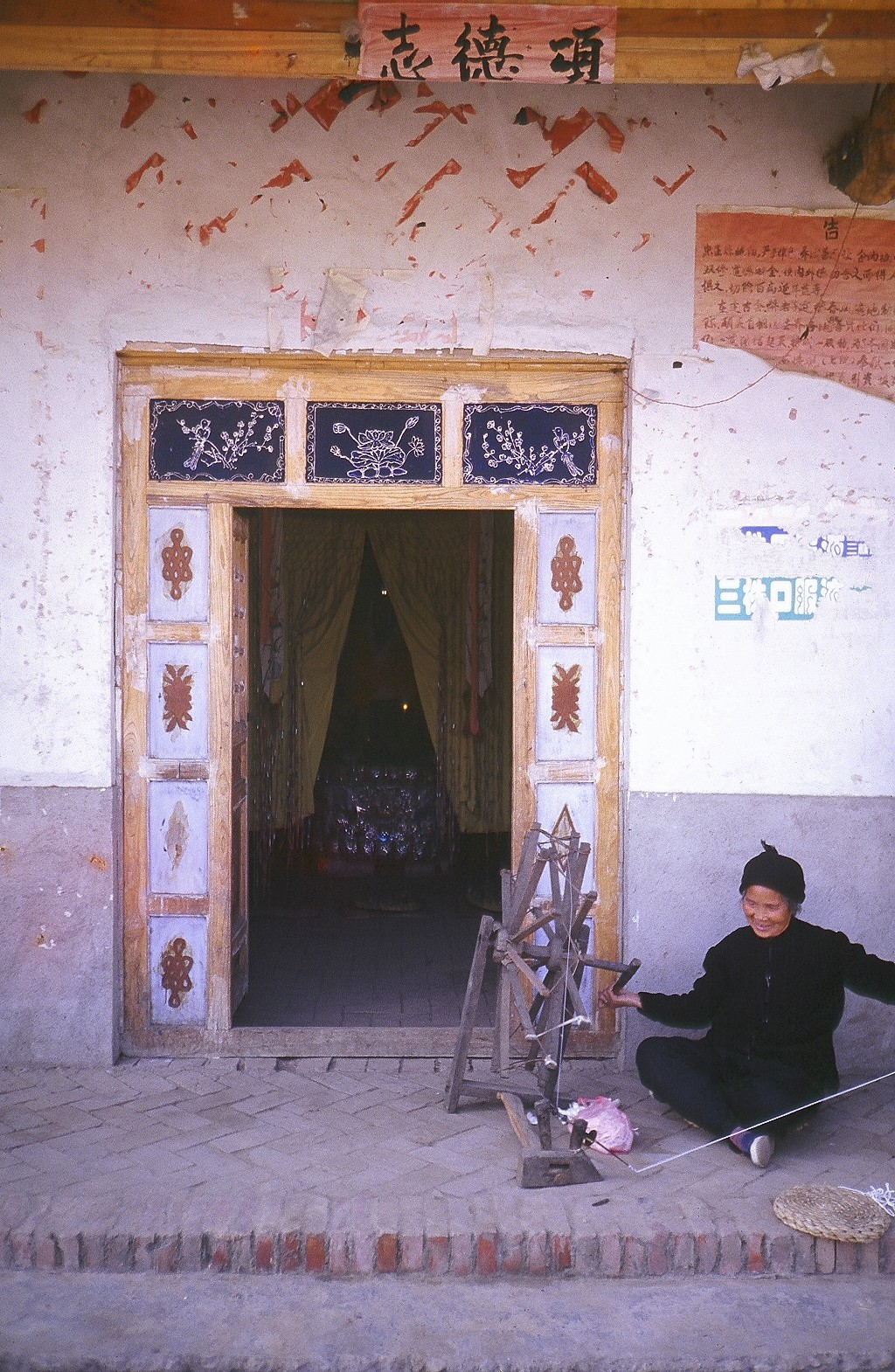
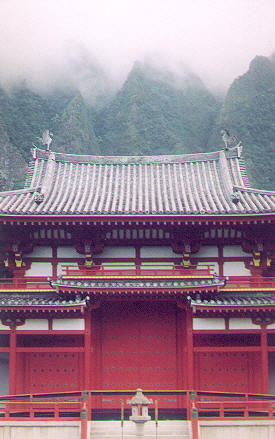
Doors:
Should open into main space of room
Should not clash with other doors
Should open entirely free from blockage or jam
Should be solid (opaque surface)
Remedy a door at the end of a long corridor
Locks and hinges should be oiled
Should be kept well painted
Revolving doors deflect sha
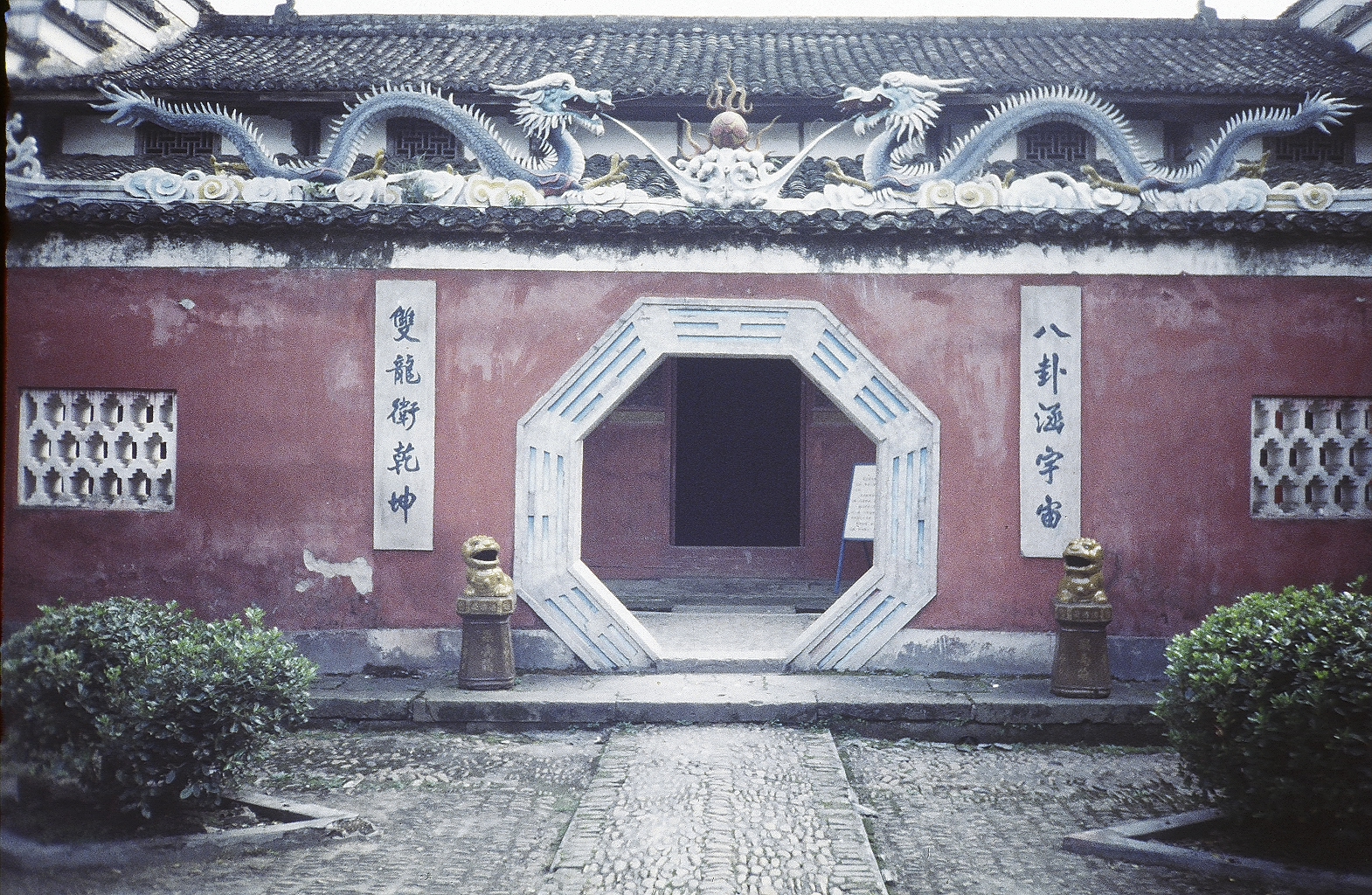
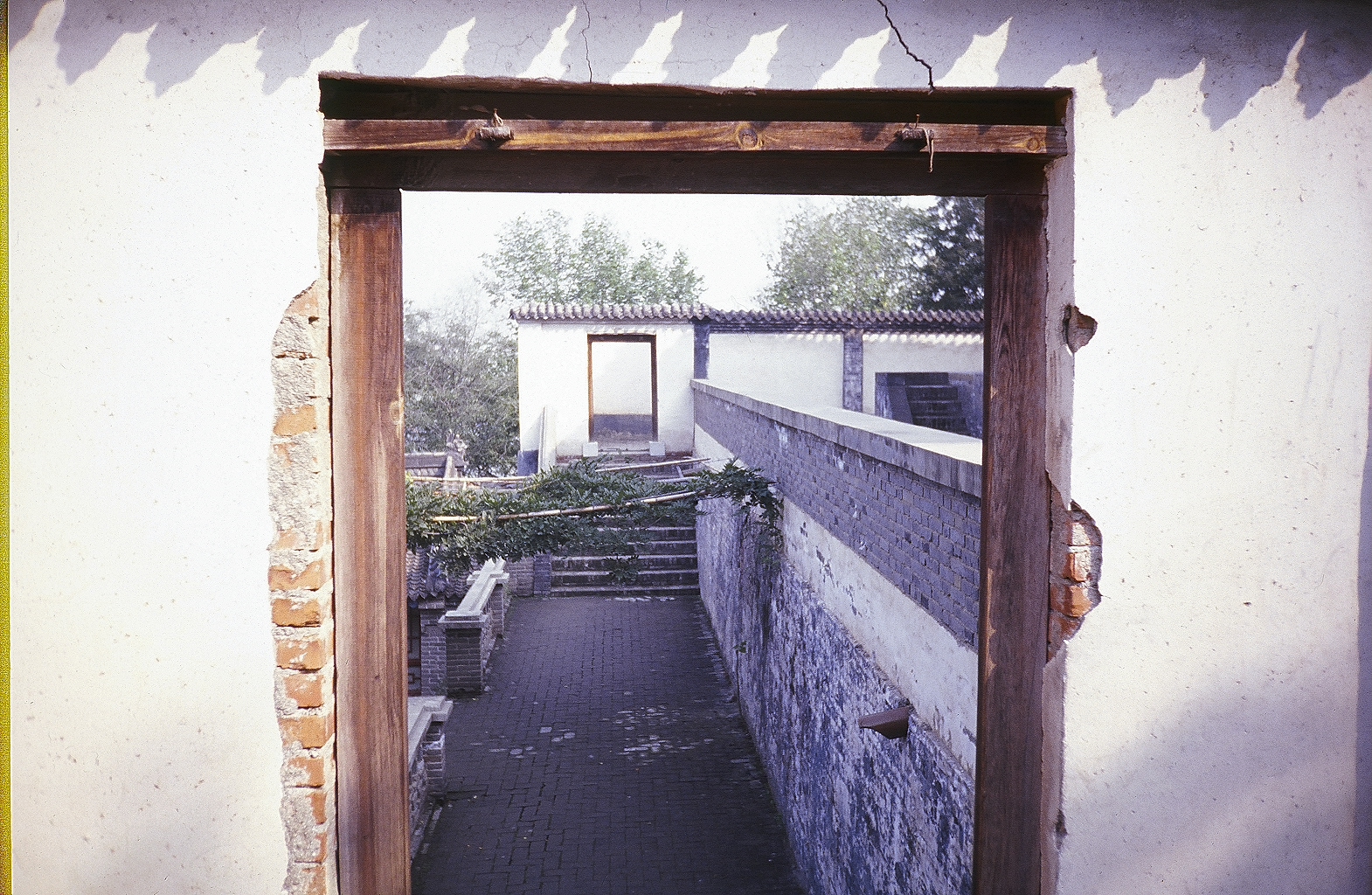
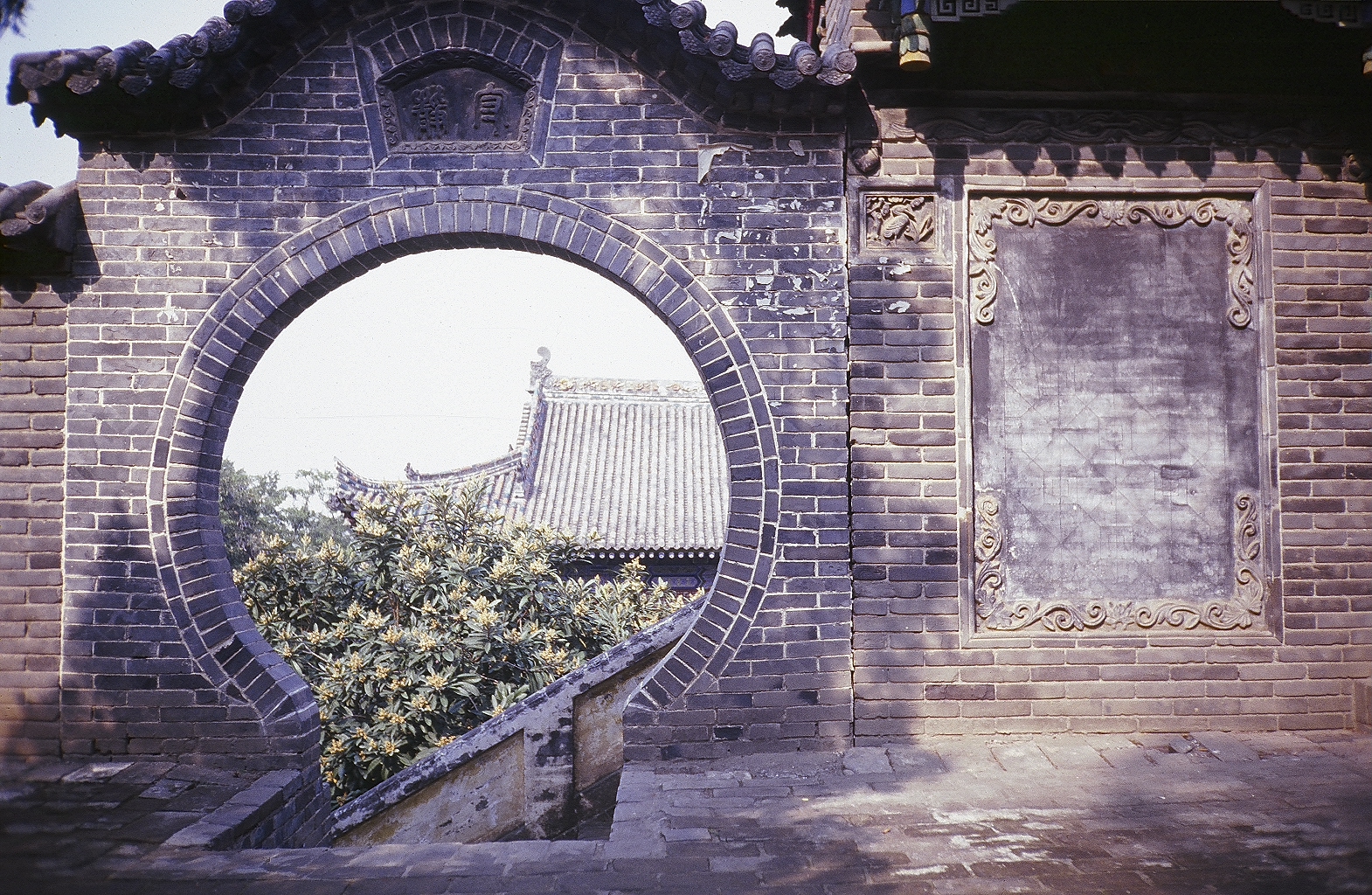
Windows:
Should preferably open outward (let stagnant qi
out)
Should be positioned to welcome fresh air, shield
glare, and capture the best views
Should avoid views of poison arrows and offending
or overwhelming views
Should have a good ratio of windows to doors
(approx.: 3:1)
Should not stick
Should be clean
Remedy: crystals
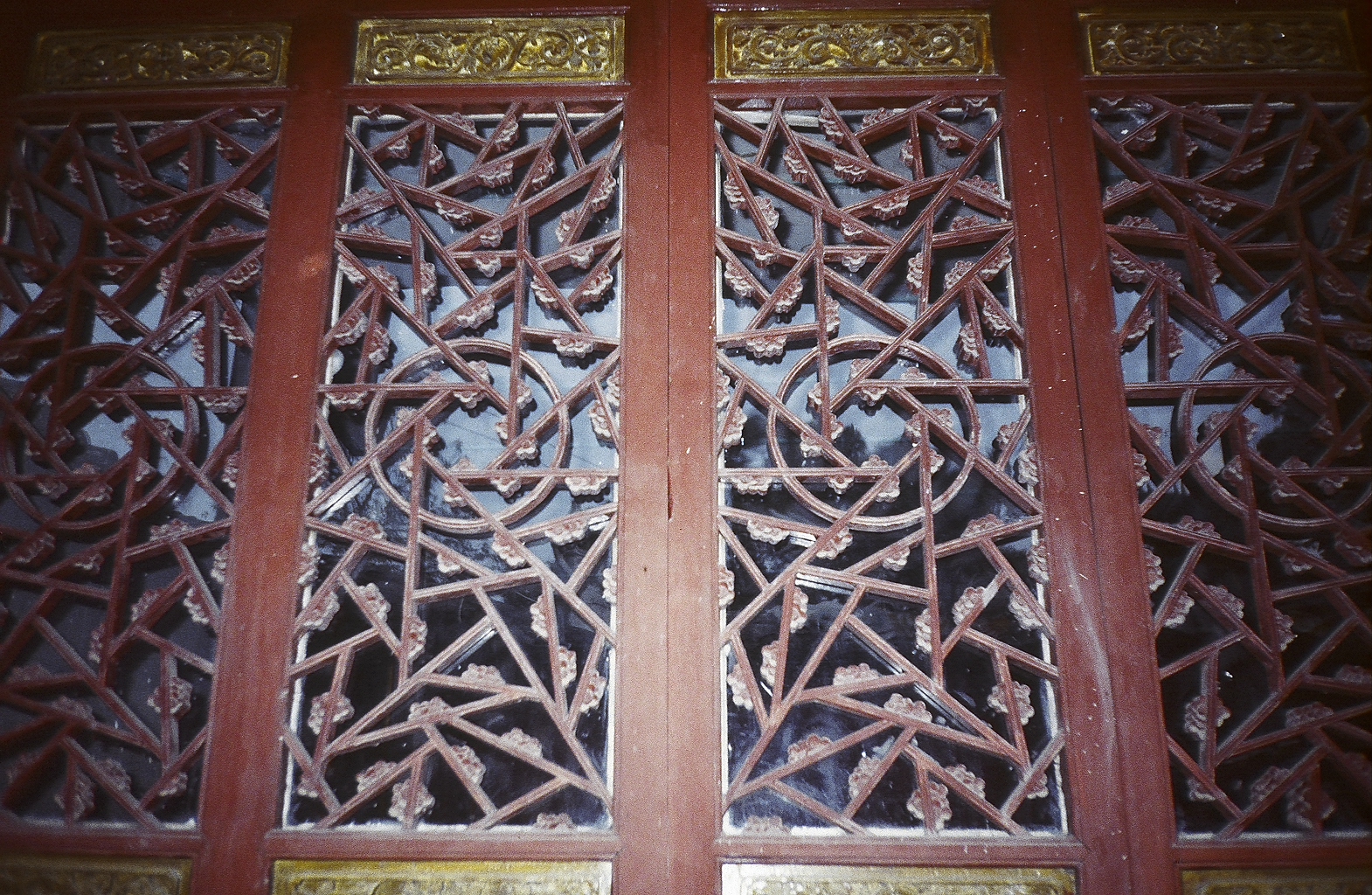
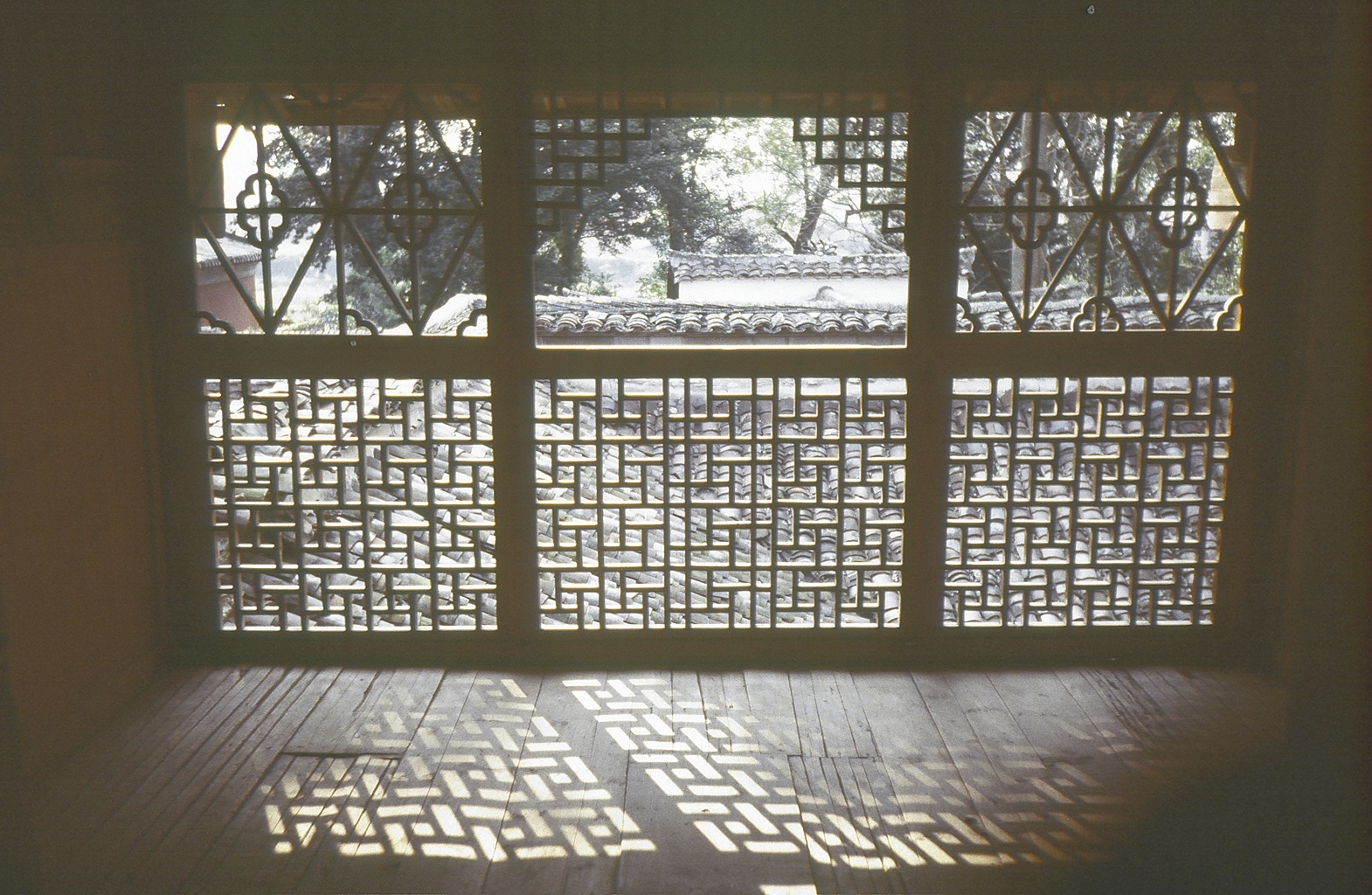
Stairs:
Should not face door
Should be wide, brightly lit, and slightly curved
Avoid stairs without backs
Stair surface should be covered
Communal stairs should be located at the sides of
the building
Spiral stairs need to be remedied (climbing plant
or green ribbon on banister)
Corridors:
Should be wide and well lit
Mirrors and banners can seemingly alter the length
of a corridor
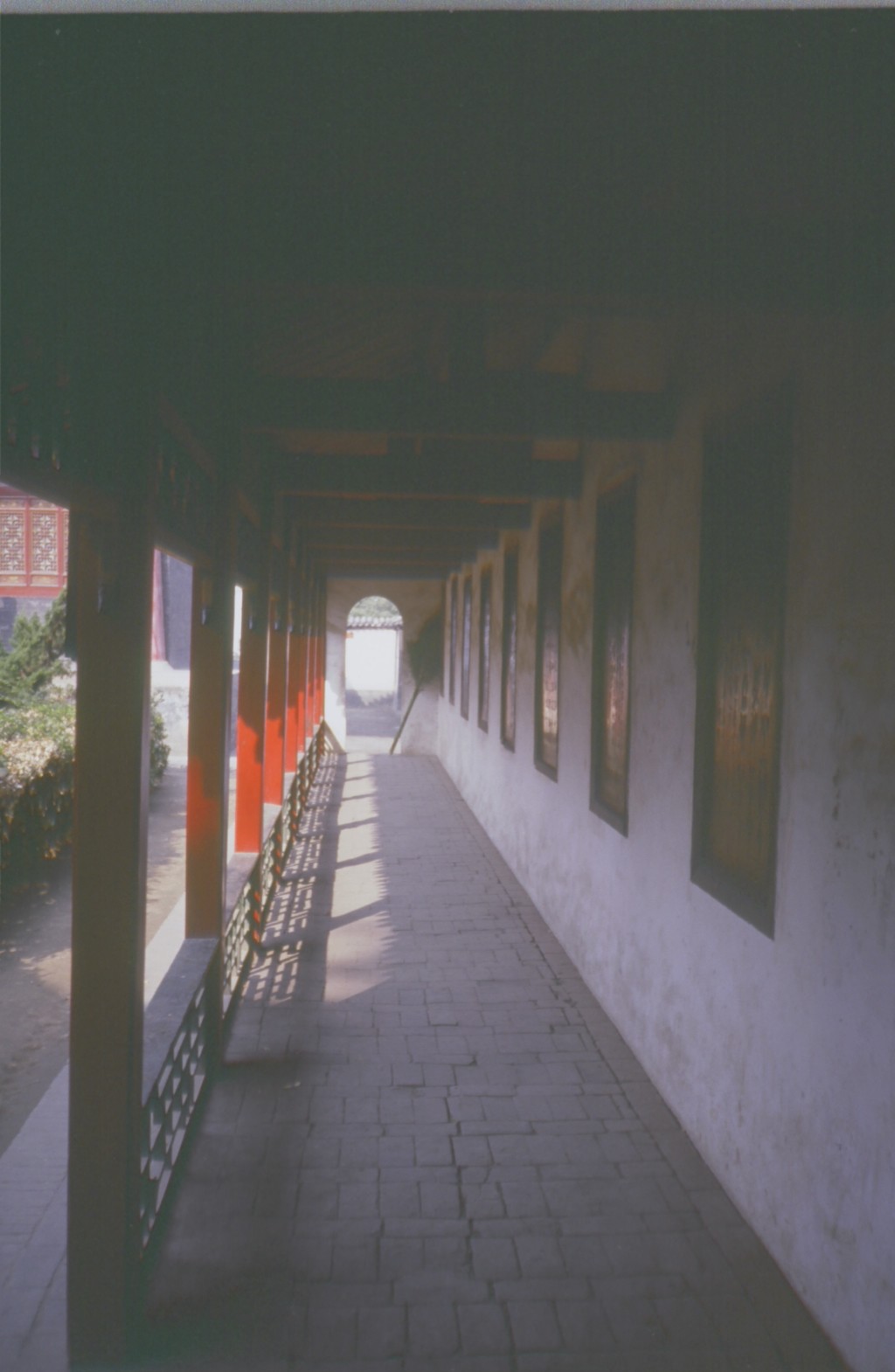
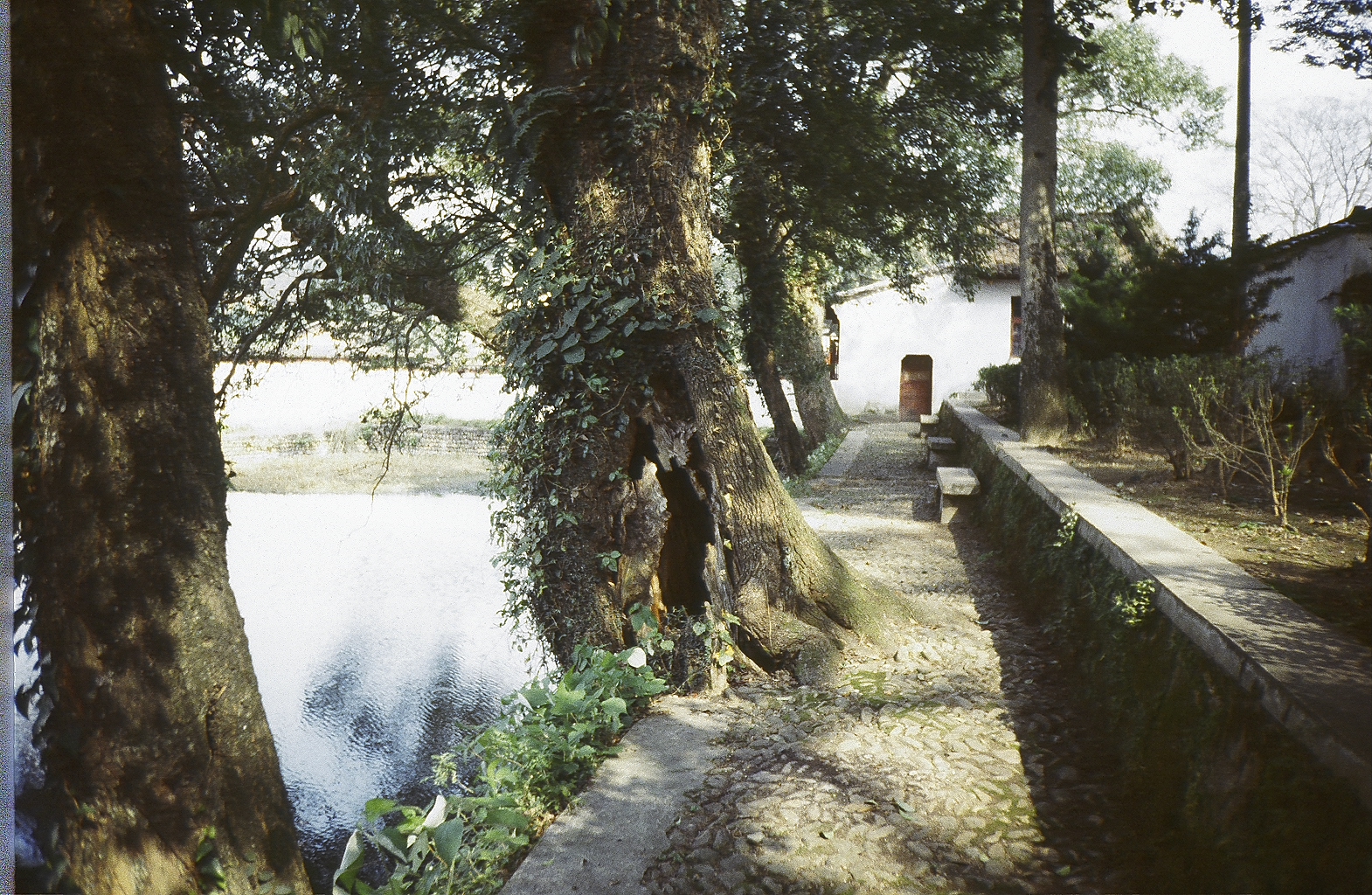
Walls, Ceilings, and Structural beams:
Walls block sha
Sloped ceilings suppress qi
and should not drop below eye level (avoid sleeping, working, and sitting)
Avoid placing furniture under beams; exposed beams
accelerates qi flow (break continuity
of beam with banner, mobile, etc.)
Paint low ceilings white and high ceiling dark
Cornices prevent stagnant qi
Protruding Corners (poison arrows): use plants,
lights, wrapped mirrors, or chimes to cover
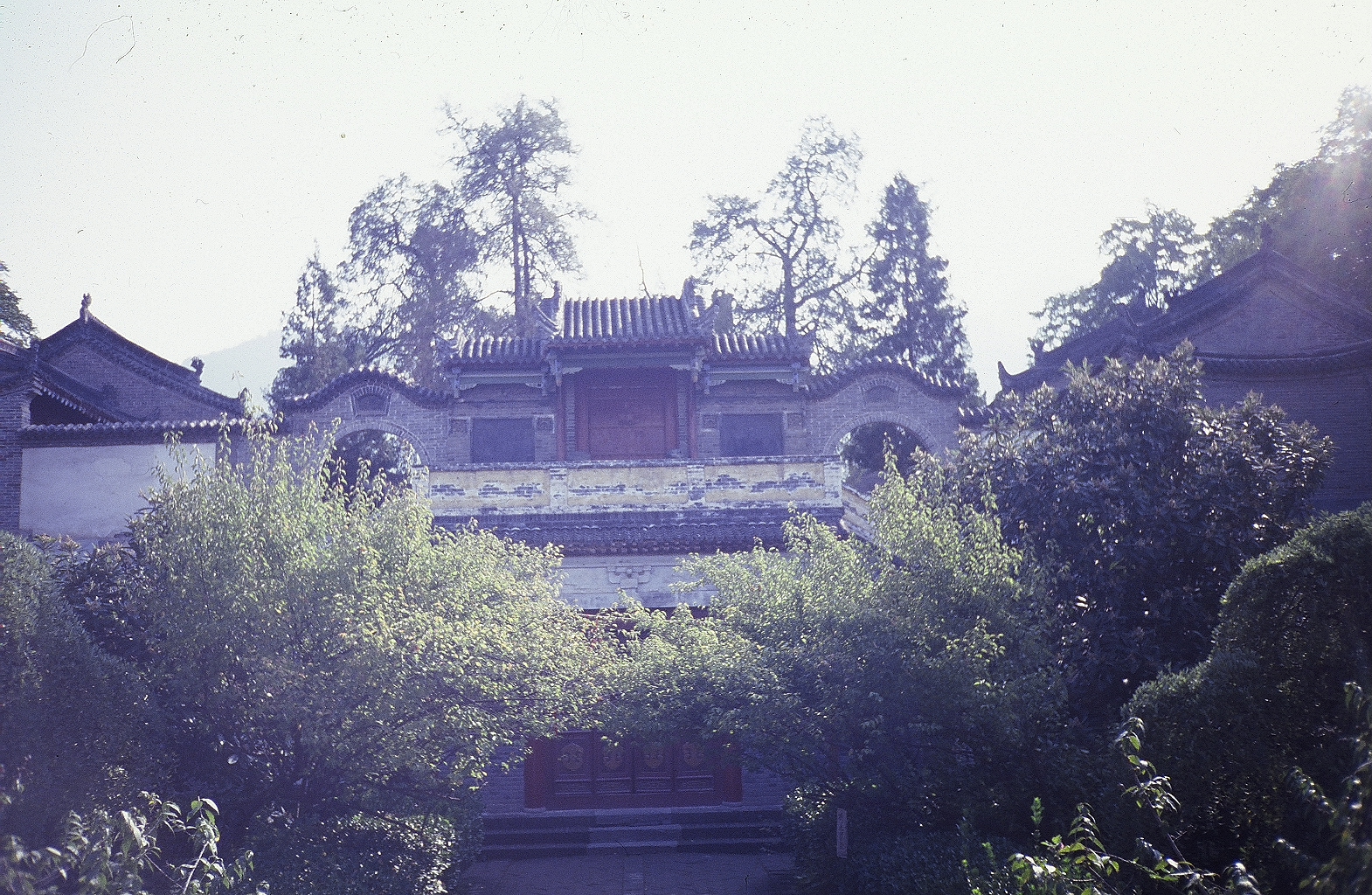
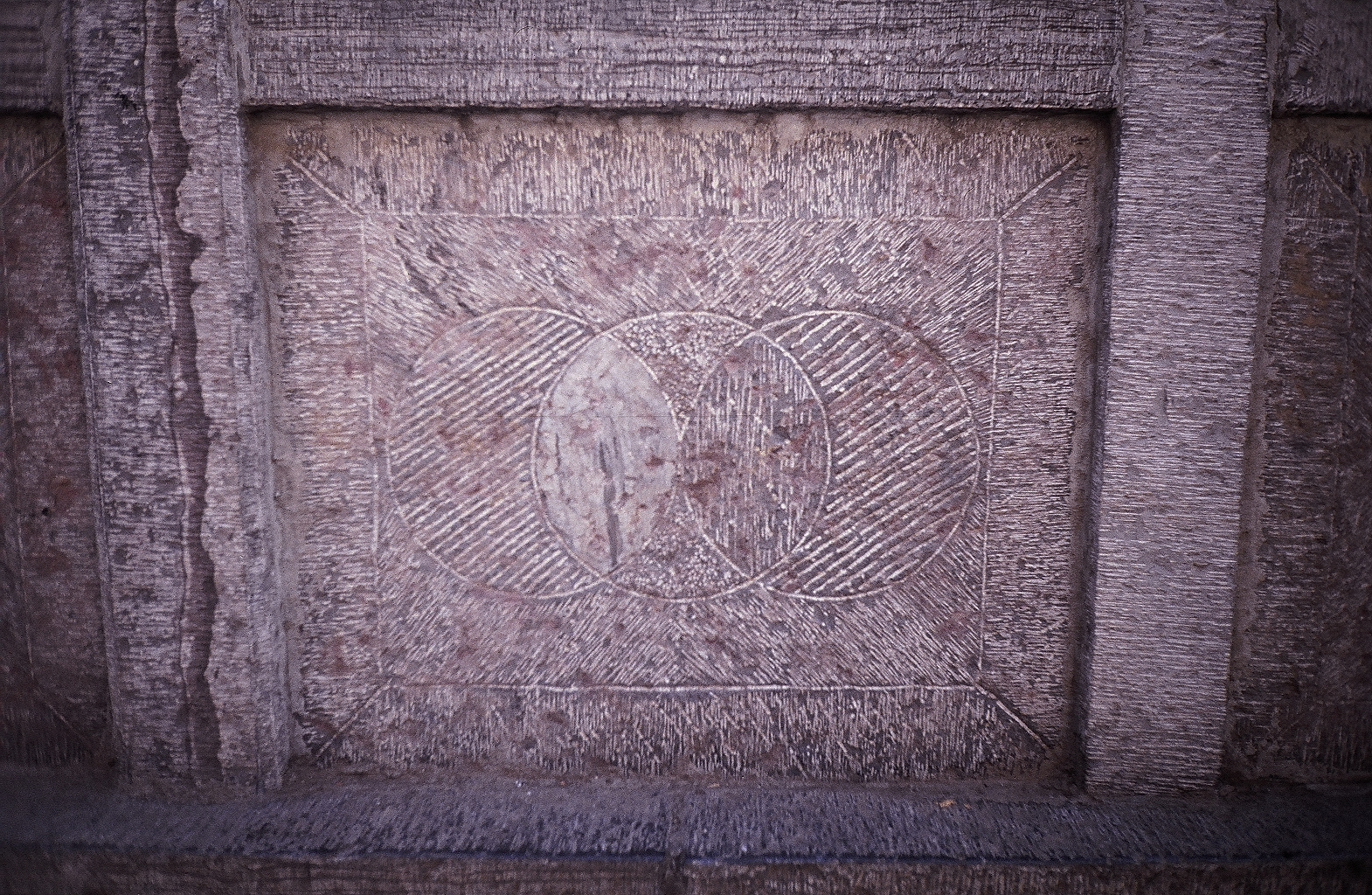
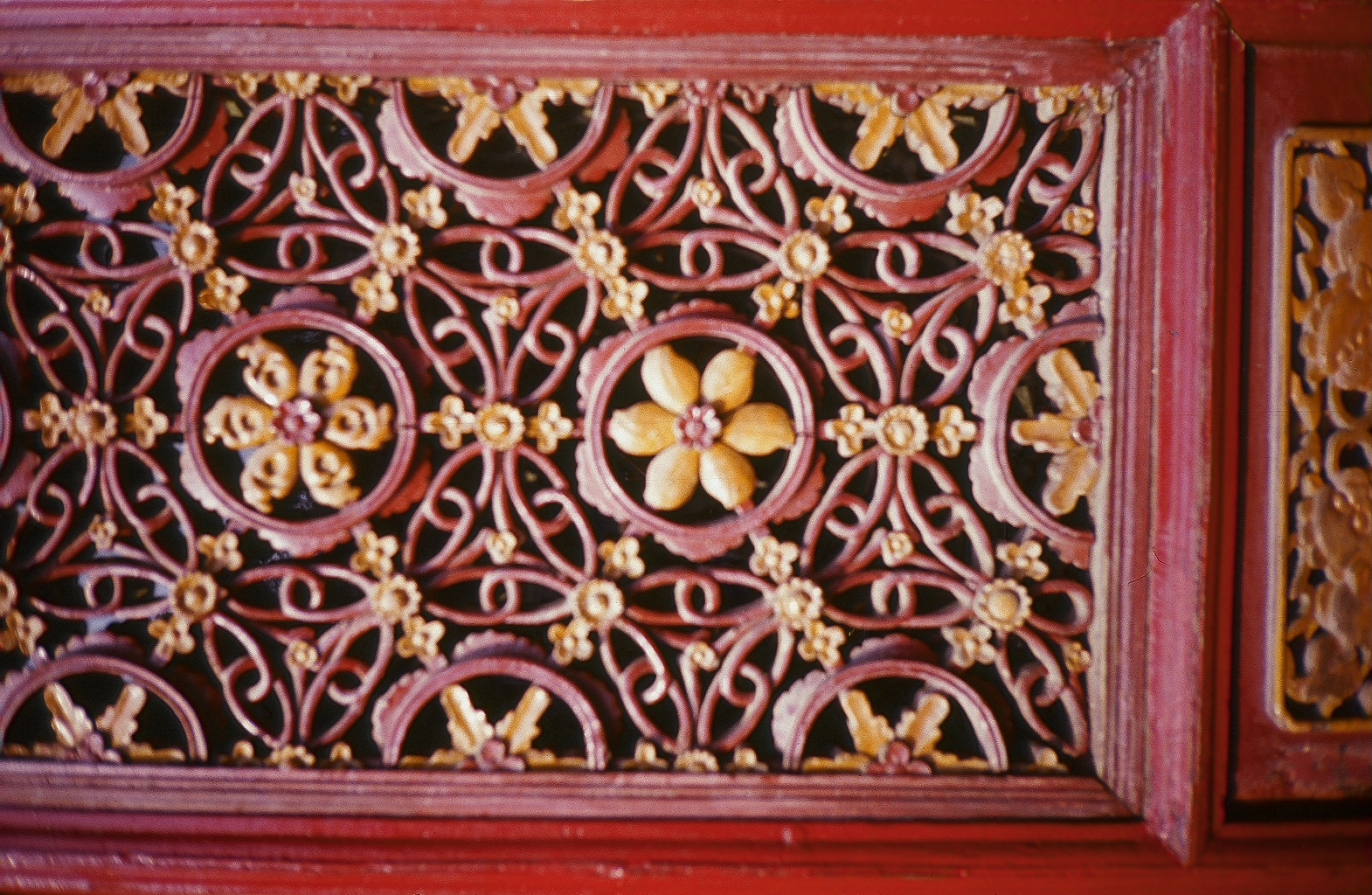
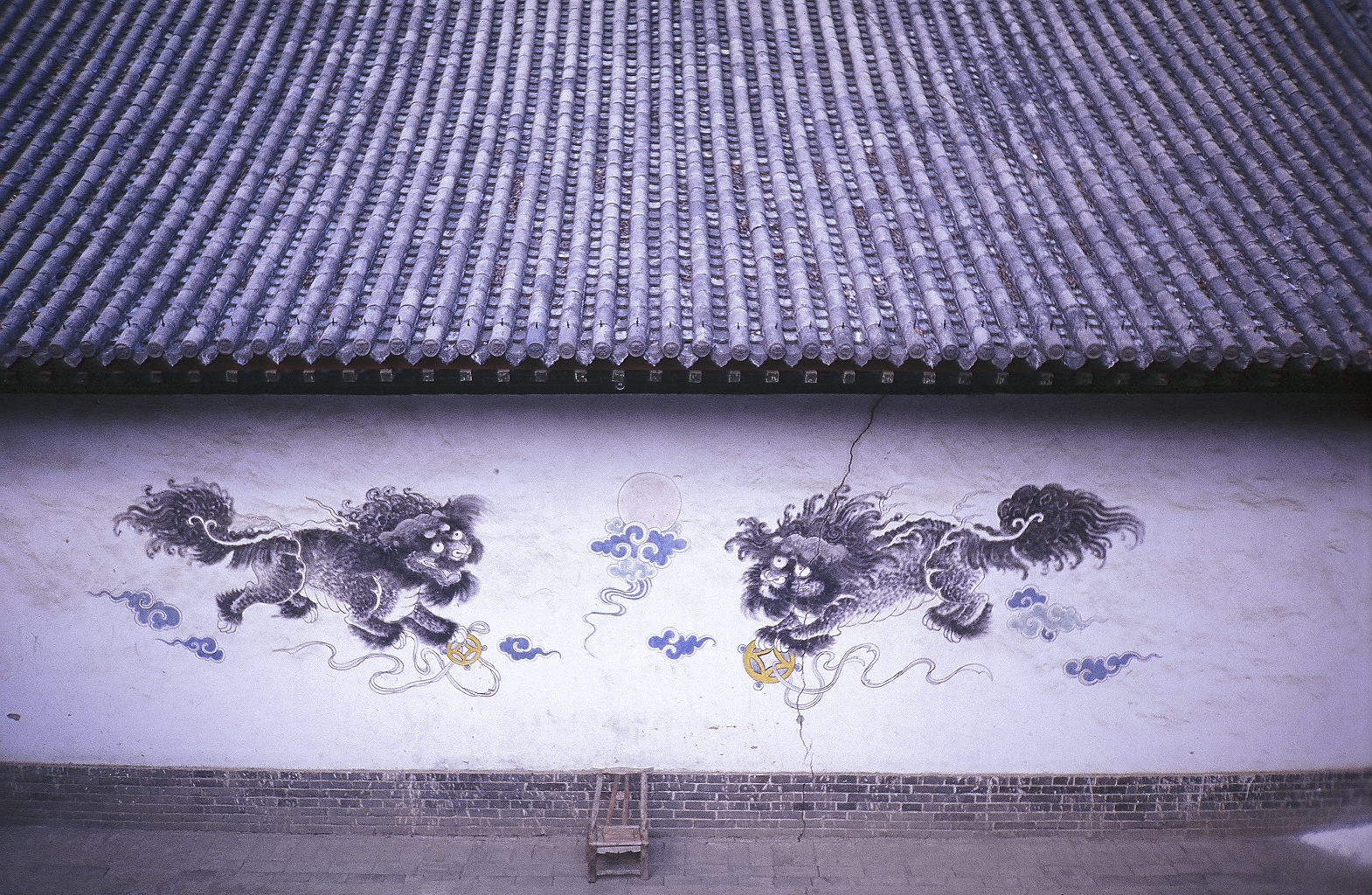
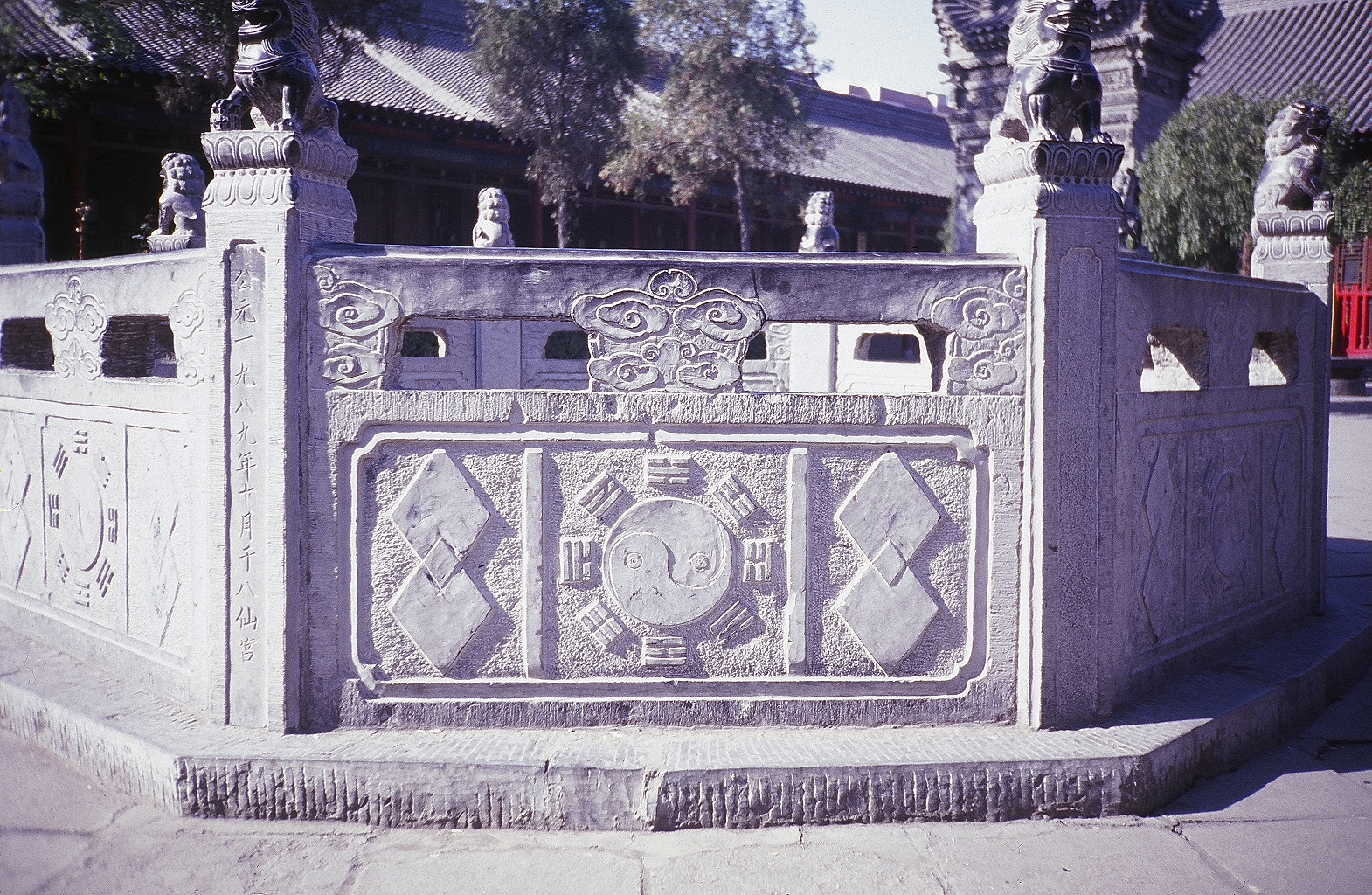
Garden/Yards:
Keep boundary low or open to encourage qi flow (hedge, trellis)
Mark a boundary to inhibit neighboring sha
Use plant beds to accent curving paths and drives
Water is essential and a multi-remedy (fountain,
bath, pond, spring; goldfish in pond if in wealth auspice)
Trees and lights can extend or fill boundaries, or
expand narrow areas
Leaf shape encourage the appropriate element
Avoid thorny plants unless the scent is good
Climbing plants on bare walls are good
Keep dead plants out
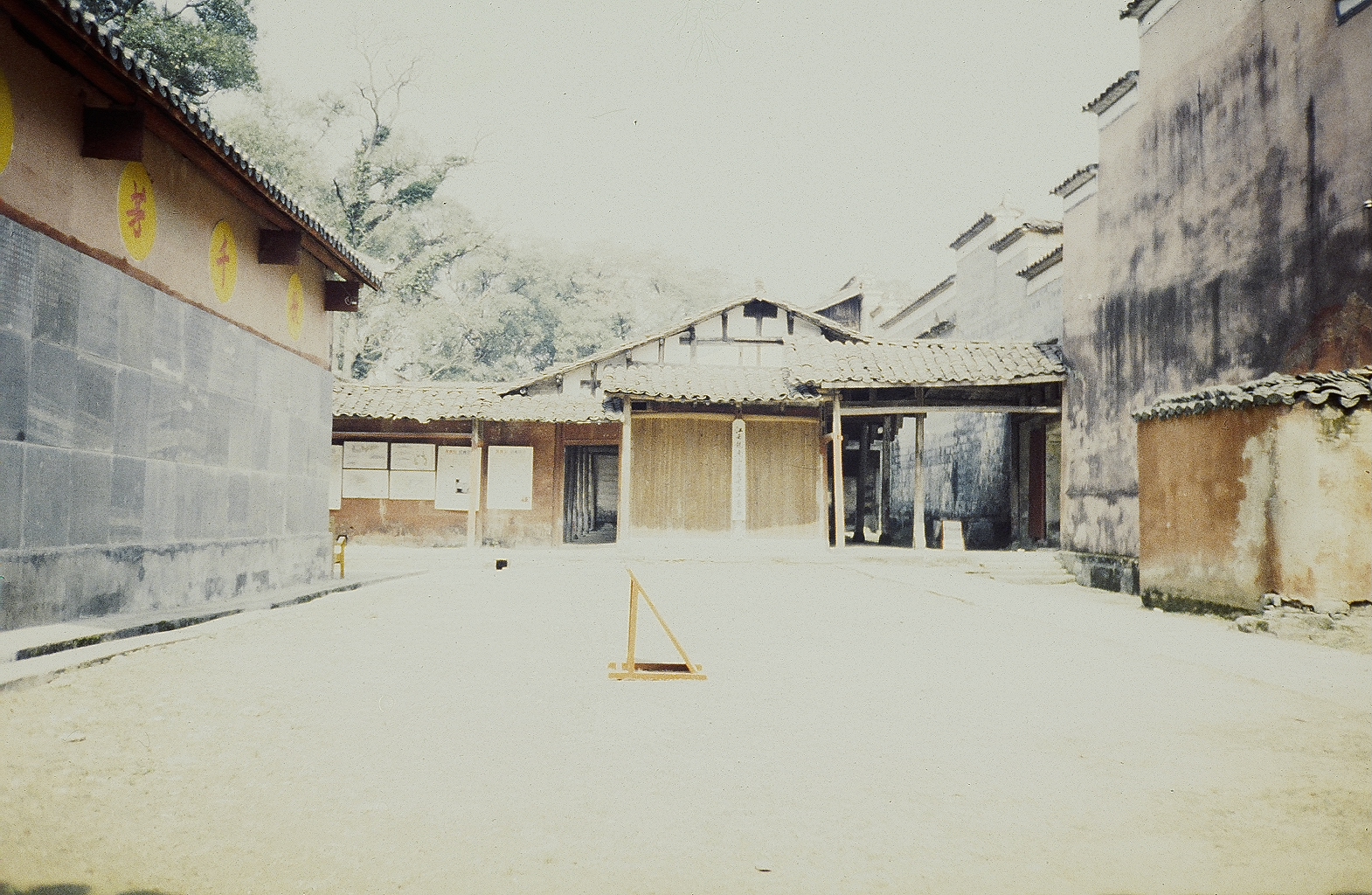
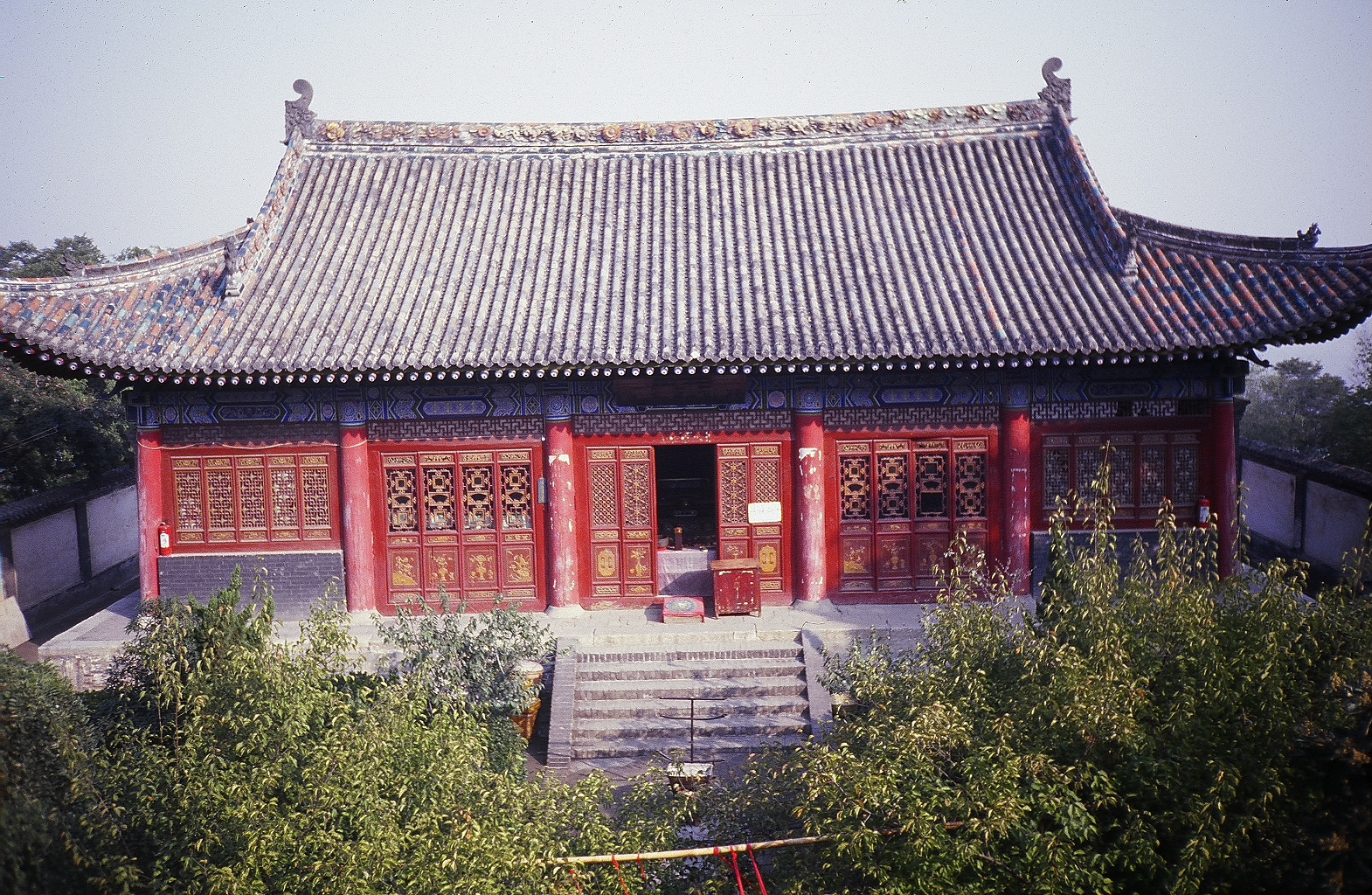
Pools/Ponds:
May drain qi
Large: too much yin
Circular, kidney-shaped, irregular: best
Should be balanced in size and maintained
Driveways:
Driveways and paths should be wide, gently curving
and sloping slightly away from the house
Semi-circular drives are ideal
Too wide: qi
flows away
Too narrow: qi
constricts
Rooms:
Typical rooms include
bedroom, living room, kitchen, dining, study, and bathroom.
Square, wide, bright, and neat shaped rooms
encourage qi flow
Irregular shaped rooms suppress qi
Rooms should make one feel happy and comfortable
Master bedroom and entrance hall should be in
harmony with the horoscope of the owner
Consider the relationship between the Bagua and family members

Bedroom: most important (1/3 of life
spent sleeping)
Bed should not face window, door, or mirror
Mirrors in the bedroom cause discord between
husband and wife (introduces a third party)
Position bed slightly off the northern axis
Do not store items under bed
Avoid lights directly over the bed
Sleeping in the prosperity location (8 locations)
is most auspicious, or having head pointed in prosperity direction
Living/Sitting:
Octagonal arrangement of furniture with walls
Arrange furniture around focal points (fireplace,
TV, table)
Remedy dead spaces with plants
Kitchen:
Should be well lit, ventilated, and spacious
Stove (fire mouth) direction should face the
head-of-the-households most auspicious direction
Position the sink away from the stove
Open shelves (knives) should be in cabinets
Use reflective (stainless steel) countertops for
safety
Islands and tables in the pathway are good for
safety to slow down circulation
Worker's back should never face the kitchen door
when working
Kitchen door should never face the main entrance
Dining:
Dining area should be situated away from bathroom
or front door
Never situate under living room or kitchen
Table should be round (heaven) and encourage
circulation
An even number of chairs is lucky
Table should be centered under light
Small tables are better than cramped tables
Mirrors make the meal seem bigger (abundance)
Study:
Avoid placing study near front door (money could
leak out)
Desk should be in according position with favorable
palace of the desk user
Desk should face door (authoritative)
Do not position desk diagonally across corner
(creating dead space behind chair)
Desk should not be floating in the middle of room (sha
steals achievement)
Bathroom:
Place away from entrance and kitchen; preferably at
the sides of the house
Never locate the bathroom at the end of a long
corridor
Never locate at the center location of the house
Never locate in the marriage (SW), family (E), or
wealth (SE) locations of the house
Avoid placing lavatory directly in front of the
main entrance
If possible hide toilet with partition in large
bathrooms
Keep door visible when using lavatory
Keep bathroom door and lid of lavatory closed
(prevent money from leaking)
Decorating/Artifacts:
This is the
careful
use of symbolism through plants, lighting, furnishings, art, patterns, and
color.
Plants:
Use to diffuse corners or square columns
Peach: health and longevity (place in E)
Red flowers: fame (place in S)
Plum Blossom: great good fortune
Peony: marriage (place in SW)
Money Plant: wealth
Lighting (fire): favorable locations for
placement is S, SE, NE, E
Crystals (earth): marriage (place in SW); rainbows
in E or W
Entrance should be lit
Chandeliers: should be centered
Furnishings:
Five elements: materials, color
Arrangement in room: Bagua
is most auspicious
Dimensions:
Art:
Paintings:
Scenic: balance
Plants and flowers: good fortune and endurance
Legendary figures: repel evil
Sculpture:
Fu,
Lu, Shou
Gods: happiness, prosperity, longevity
Lions: protection
Patterns: walls, floors, and ceilings
Animals:
Elephant: wisdom
Phoenix/dragon: balance
Fish scales: success
Dragon Horse/Unicorn (Chi
ling): wisdom, joy, longevity, illustrious offspring
Bats: luck, longevity
Cranes: fidelity, honesty, longevity
Deer: wealth, longevity
Frog: arrival of wealth; place inside main door
Horse: fame (place in S), speed, perseverance
Turtle: longevity
Hare: longevity
Cicada: longevity
Peacock: dignity, beauty
Bear: protection
Plants:
Pine tree: longevity and endurance
Lotus: endurance, uprightness
Fruit: luck
Bamboo: good wishes
Flowers: wealth
Elements:
Water ripples: wealth, heavenly blessing; place on
N wall
Clouds: wisdom
Immortals:
Old man, tortoise shell: longevity
8 symbols/immortals: longevity
Color:
Should be considered in accordance with the Five
Elements and Bagua-Loshu location.
Green: tonifies good energy
Gold: supports
Red: cures sha
The business is
fundamentally evaluated through the lot, main entrance, office, address
numerology, and tips for activating wealth.
Lot:
Examination of the lot
can provide the ideal location and orientation for the structure.
Ideal Location:
On a curving, slow moving road
On a corner
Has open space in front of main entrance
Has protection in back
Buildings at left (dragon) are taller than
buildings on right (tiger)
Examinations:
Neighbors: views, offenses, history
Approach Roads: poison arrows, slope, traffic, fly-overs,
facing T-junctions
Ideal Orientations:
|
Fortunate Orientation of
Office or Shop |
|
|
Office/Shop
Type |
Fortunate
Direction |
|
Law firm, medical center, shipping company |
N, E |
|
Accounting, finance, bank, architecture |
NW, SE |
|
Import/export, trading |
N, E |
|
Provision shop, saloon |
N, SE |
Main
Entrance:
Direction
faced
The main entrance is an indicator of wealth.
Wealth: SE; Using owner's gua
number
Office:
Proper placement and
orientation of the doors, receptionist, desks, and boardroom features are
factors that can enhance the energy of the office space.
Door:
Should never face across from a bathroom door
Should never face another door, window, back door,
or escalator
Should never be at the end of a corridor
Should stagger doors in floor plan of office
arrangement
For wealth auspiciousness, have door face best (1st)
direction pertaining to ones yearly kua
number
Receptionist:
Desk should not face main door
Back of receptionist should be supported by wall
Desk:
Position in the corner opposite the door with the
back supported by the wall
For personal advancement auspiciousness, the
personal direction faced in the office should be the 4th best
direction pertaining to one's yearly gua
number
Boardroom:
CEO chair should be supported by furthest wall from
door
CEO chair should face CEO gua number most favorable direction
Element color of room should be that of CEO element
of yearly stem
Address
Numerology:
Address numerology
indicates good fortune and specific meaning.
Lucky Numbers: 2, 5, 6, 8, 9, 10
Number Meanings:
2 = easy
5 = harmony (5 elements)
6 = wealth
8 = becoming rich
9 = longevity
10 = certainty, sure
double digits = duality
Activating
Wealth:
Wealth can be activated through the use of water,
coins, logo, and cash register modifications.
Water:
Should be in view of main entrance
Water should flow past main entrance in an
auspicious direction
Should flow left to right for main entrance in SE,
SW, NE, NW; and vice versa
Coins:
in SE
Logo:
in SE
Cash
Register:
Mirror: reflecting cash register, facing main
entrance
Hanging flutes: slanting upwards above register
The
form school and compass school are now blended in various formulas to
appropriately adapt to the situation in context.
Form
School:
Dragon
Symbolism
Founded
by Master Yang, the Form School requires the presence of the cosmic dragons
breath in the position, shape, and direction of yin and yang topological
features, or rivers and mountains respectively. Energy forces effecting human
fate are called dragon lines.' This method relies more on the intuition of
the practitioner.
Compass
School:
YiJing
Philosophy
A
later method developed from YiJing
philosophy, compass directions, and an individual's date of birth to determine
auspicious directions and locations. This method relies on mathematics to derive
metaphysical speculation on numerology.
Formulas:
East-West House
Eight Locations
Bagua-Luoshu
Combined Applications
Flying Star Geomancy
If light is called the life-blood of an
architectonic form, darkness could rightly be called its soul. Tiao Chang
Yin:
shade, negative space, rivers, roads, windows and
doors (openings)
Sha:
negative qualities (straight lines)
Unstable Ground: faults and fissures
Straight Lines: gullies, tunnels, central
passageways within a building, through rooms w/windows at each end
Poison Arrows: corners of buildings, edges of
buildings, roads and pathways, telephone wires directed toward the site,
staircases opposite doors
Obstructions: telephone poles, lamp posts, tall
trees blocking windows
Overwhelming Views: flyovers and ramps, crosses and
steeples
Death: a place that makes us feel bored and
uninspired; close to abodes of the dead or sick (cemeteries, hospitals)
Yang:
light, positive space, mountains, buildings, walls
Qi:
positive qualities (curves)
Gentle curves
Life: a place that makes us feel happy and
comfortable
The
four emblems may equate to the four points of the compass, but only when
orientation of a building is south. The four emblematic animals characterize the
four facing walls in a space. Each direction has an ideal setting. The dragon
direction is the most auspicious of the four directions.
FOUR
CELESTIAL ANIMALS
|
||||||
|
Colored
Animal |
Polarity |
Season |
Direction |
Element |
Building
Orientation (Emblems) |
Portent
Quality |
|
Green
Dragon |
(+) |
Spring |
East |
Wood |
Right |
Abundance |
|
Red
Bird |
(+) |
Summer |
South |
Fire |
Front |
Fame |
|
White
Tiger |
(-) |
Autumn |
West |
Metal |
Left |
Ferocity |
|
Black
Tortoise |
(-) |
Winter |
North |
Water |
Back |
Protection |
Facing
Walls:
Walls
are called particular celestial animals according to the (outer) direction they
face.
Ideal
Setting:
The ideal setting depends on the shape, or features,
of the space in a designated direction, the dragon feature locations, and
troubleshooting site precautions.
Shape
Descriptions:
Dragon: has higher, more rugged, and more prominent
hill
Bird: open, sunken courtyard, pool, deciduous
trees, rocks or feature representing a red bird; land slopes gently away
Tiger: has smaller hill; flat plain; stream
blocking the unpredictable qi
Tortoise: higher mountains, coniferous trees,
buffer zone (protection)
Capturing
the Dragons Breath:
The dragon and tiger are mutually existent.
It is best for the dragon to dominate the tiger.
It is favorable when the dragon and tiger embrace
(wrap around each other).
It is very favorable when the scenic features of
the dragon can be distinguished.
It is unfavorable to destroy the scenic features of
the dragon.
Capture views to slow moving water and lush
vegetation
Site possess open land (the bright hall) in front
of the main entrance
Site is located on undulating hills
Notes
on the Water Dragon Classic:
Natural:
Water is a symbol of wealth and prosperity.
The river is the symbol of the dragon.
The water brings qi
if it meanders smoothly and cleanly. This rate of flow allows the qi
to settle, which is auspicious.
Artificial:
Reflecting Pools: the closer to the building, the
smaller they should be
5 Elements:
When the watercourses meet or meander, the five
elements interact.
Metal: large curves
Fire: zig-zag
Earth: sharp turn
Flow Portents:
Flows rapidly away from site: qi disperses, no wealth
Comes in straight towards site: injury
Darts left: misfortune for eldest son
Darts right: youngest son meets calamity
Auspicious:
The water (belly of dragon) wraps around the site
Site
Precautions:
Weather: Study the site as it interacts throughout
the day and the seasons of the year. Take note of the sun angle, wind
directional patterns, and the elements. The bad winds originate in the north and
northeast (the gateway to hell).
Sites on Peaks: Qi
is dispersed quickly because water flows away rapidly. Also the peak is exposed
to the elements.
Threatening rock formations
Avoid places exposed to elements: peaks, plains
The five elements may help characterize a building or
site in terms of its industrial purpose, area of designated use, building shape,
or building materials. Elemental laws should be utilized to find their balanced
integration.
APPROPRIATE ELEMENT FOR
ITEMS
|
|||||
|
Item |
Wood |
Fire |
Earth |
Metal |
Water |
|
Commerce and Industry |
Artist
studio, caf้, carpentry, catering establishment, hospital, nursery,
residence, restaurant, watch tower |
Chemistry,
library |
Blocks of
flats, building, ceramics, civil engineering, farming |
|
Advertising,
arts, brewing, communications, distilling, electricity, literature, media,
music, oil wells |
|
Residential |
Bedroom,
childrens room, dining room |
Kitchen,
library |
Garage,
storeroom |
Workshop |
Bathroom,
laundry |
|
Architectural Shapes and
Features |
Column,
pillar |
Angles,
steeple |
Bricks,
squares, tunnels |
Arches,
domes |
Windows,
post |
|
Substances, Materials, and
Objects |
Furniture,
plants, trees, vegetables |
Animals,
blood, furnace, leather |
Clay,
plains |
Coinage,
hardware, jewelry, knives, money, railways, swords |
Glass |
ENVIRONMENTAL
INFLUENCES ON SITE
|
|
|||||
Site Elements
|
Environmental
Elements
|
|
||||
|
WOOD
(Columnar) |
FIRE
|
EARTH
|
METAL
(Round) |
WATER
(Irregular and Undulating) |
||
|
WOOD |
g |
q |
L |
N |
[ |
|
|
FIRE |
[ |
g |
q |
L |
N |
|
|
EARTH |
N |
[ |
g |
q |
L |
|
|
METAL |
L |
N |
[ |
g |
q |
|
|
WATER |
q |
L |
N |
[ |
g |
|
|
Key:
g
= stable
q
= weak (controlling)
L
= unhappy: counteracting (destructive)
N
= danger (threatening): interacting is either restraining or overacting
(destructive)
[
= ideal (controlling): interpromoting (generative) |
|
|||||
EIGHT TRIGRAMS AND NINE PALACES

The eight trigram-nine palace symbol provides several theories of geomancy, emphasized in the compass school. These theories include: eight remedies, east-west house, eight locations, bagua-luoshu, combined applications, and flying star.
|
THE
RULE OF NINE WITH TRIGRAMS |
|||||||||
|
Eight
Trigrams |
|||||||||
|
Attribute |
QIaN |
SUN |
LI |
GEN |
CHUNG |
DUI |
KAN |
ZHEN |
KUN |
|
Image |
Heaven |
Wind/
Wood |
Fire/Heat
(lightning,
sun) |
Mountain |
Center |
Sea/
(lake) |
Water/
Lake
(moon) |
Thunder |
Earth |
|
Family Member |
Father |
Eldest
daughter |
Middle
daughter |
Youngest
son |
|
Youngest
daughter |
Middle
son |
Eldest
son |
Mother |
|
Later
Heaven
Sequence Direction |
NW |
SE |
S |
NE |
Center |
W |
N |
E |
SW |
|
Former
Heaven
Sequence Direction |
S |
SW |
E |
NW |
Center |
SE |
W |
NE |
N |
|
Element |
Metal
(big) |
Wood
(small) |
Fire |
Earth
(small) |
|
Metal
(small) |
Water |
Wood
(big) |
Earth
(big) |
|
Property |
Creative |
Gentle |
Clinging |
Keeping
still |
|
Joyous |
Abysmal |
Arousing |
Receptive |
|
Aspiration |
Mentors |
Wealth |
Fame |
Know-ledge |
Peace |
Children |
Career |
Family |
Marriage |
|
Trigram Color |
Gray/
white, silver, gold |
Purple/
green |
Red/
red |
Turquoise/
beige |
|
White/
white, silver, gold |
Black/
black, blue |
Green/
green brown |
Yellow/
beige yellow |
|
Feature |
Metallic |
Plants |
Lights |
Mountain |
|
Metallic |
Aquarium,
ponds |
Trees |
Planet |
|
Civil Works |
Circles |
Business |
Weaponry |
Gates |
|
Reflections |
Wheels |
Roads |
Squares |
|
Nine
Palaces |
|||||||||
|
Palace Number |
6 |
4 |
9 |
8 |
5 |
7 |
1 |
3 |
2 |
|
Palace Color |
White |
Turquoise-green |
Purple |
White |
Yellow |
Red |
White |
Jade-green
(blue) |
Black |
|
Palace Portent |
B |
B |
B, M |
B |
M |
B,
M, N |
B
|
B,
M, N
|
M
|
|
Palace Animal |
White
tiger |
Light
green dragon |
Bird |
Yellow
snake |
Red
tiger |
Turtle |
Dark
green dragon |
Yellow
snake |
|
Notes:
The sequence always aligns on the door or entrance
of the space; the application is flexible to the scope examined (lots,
buildings, rooms, furniture)
The direction (using the later heaven sequence) the
site faces by the main door will determine the nine-square portent arrangement
Feng
Shui
and YiJing Consultation Methods:
1)
To see if an area is favorable, the former heaven
sequence was imposed over the later heaven sequence (of the annual magic
square), and the trigram conjunction (hexagram) is referred to in the YiJing.
2)
Place the trigram of the 9 square area over the
trigram of the direction faced.
Eight
Remedies:
Directional Influence on Qi and Sha
Movement: flag, banner,
ribbon, fountain, mobile, chimes, incense, pinwheel, revolving door, fan
Color: 5 element
Machines: appliances
Life: plants, fish,
money, artificial plants
Light: mirrors, lights,
crystals
Straight Lines, Hollow
Objects: fan, sword, bamboo
Stillness: statue,
boulders, stones, sculpture
Sounds: chimes, bells
|
DIRECTIONAL INFLUENCE ON QI
AND SHA WITH THE FORMER SEQUENCE |
|||
|
Direction |
Qi |
Sha: Consequential Effect |
Eight
Remedies |
|
N |
Nurturing |
Lingering: laziness |
Movement:
flag, banner, ribbon, fountain, mobile, chimes, incense, pinwheel |
|
NE |
Flourishing
|
Stagnating: illness
|
Color:
5 elements |
|
E |
Growing |
Overpowering:
egotistical |
Machines:
appliance |
|
SE |
Creative
|
Provoking:
irritability |
Life:
plants, fish, money |
|
S |
Vigorous
|
Accelerating:
exhaustion
|
Light:
mirrors,
lights |
|
SW |
Soothing
|
Disruptive: anger
|
Straight
Lines:
fan, sword, bamboo |
|
W |
Changeable
|
Dangerous: rash
|
Stillness:
statue |
|
NW |
Expansive
|
Unpredictable:
unsettled |
Sounds:
chimes |
|
EIGHT REMEDIES FOR THE
ASPIRATIONS OF THE LATER SEQUENCE |
|||
|
Direction |
Trigram:
Image |
Aspiration |
Ideal
Remedy |
|
N |
Kan:
Water |
Career |
Life (fish) |
|
NE |
Gen:
Mountain |
Knowledge |
Light (crystals) |
|
E |
Zhen:
Thunder |
Family |
Life (plants) |
|
SE |
Sun:
Wind |
Wealth |
Life (plants) |
|
S |
Li:
Fire |
Fame |
Light (bright lights) |
|
SW |
Kun:
Earth |
Marriage |
Light (crystals) |
|
W |
Dui:
Sea |
Children |
Sound (chimes) |
|
NW |
Qian:
Heaven |
Mentors |
Sound (chimes) |
East-West
House Theory:
The East-West House Theory states there are eight
house types, which correlate directly to the eight trigrams, or Bagua structure. The eight trigrams are divided into two houses, the
east and west. This theory determines which trigram and trigram attributes
(element) rules the place investigated. It is auspicious for the ruling trigram
to be compatible with the natal number of the building user, or owner, and the
annual number.
|
EAST-WEST HOUSE TYPE
ATTRIBUTES |
|||
|
Trigram |
Front
Door |
Back
Door |
Element |
|
EAST HOUSE |
|||
|
Li |
N |
S |
Fire |
|
Kan |
S |
N |
Water |
|
Zhen |
W |
E |
Wood |
|
Sun |
NW |
SE |
Wood |
|
WEST HOUSE |
|||
|
Qian |
SE |
NW |
Metal |
|
Kun |
NE |
SW |
Earth |
|
Gen |
SW |
NE |
Earth |
|
Dui |
E |
W |
Metal |
Identification of Place
Type:
To determine the house type of a place, simply
determine the direction the front or back door faces (from the inside looking
out). When in doubt, use the back door as the determining factor. The back door directly corresponds to the trigram direction,
whereas the front door corresponds to the opposite trigram direction.
East Type House (water, wood, fire): To enhance an
Eastern Type House use remedies of life, light, or movement (water structure)
near the front door, or corresponding Bagua
aspiration locations.
West Type House (metal, earth): To enhance a
Western Type House use chimes and crystals in the corresponding Bagua aspiration locations.
Identification of Person
Type:
It is auspicious for a person to live in a place
with a similar house type. To determine the house type of a person, find the
natal (gua) number of birth and
determine its position on the Luoshu Magic
Square. Determine the fortunate and unfortunate locations and directions
corresponding to the person's gua
number. If there is no correspondence between the gua
numbers of the person and the place, adjust the areas through rearrangement,
reduction, or enhancement.
Eastern Person's Fortunate Locations/Western
Person's Unfortunate Locations: S, E, SE, N
Western Person's Fortunate Locations/Eastern
Person's Unfortunate Locations: W, SW, NW, NE
Calculating Annual Number to find Natal/gua Number:
1)
Calculate the annual number:
corresponds to year of birth
2)
Find the solar month of birth:
to confirm the Chinese year of birth and to find natal number
3)
Find the natal number: use
table by cross referring annual number with solar month
4)
Find natal number attributes:
the most harmonious place in the building is the one whose ruling element
generates the element associated with a persons natal number
Annual and Natal (gua) Numbers:
Annual numbers progress in reverse order. The natal
(gua) number for a man is the same as
the annual number of the year for the year he is born. The natal (gua)
number for a woman progresses in direct sequence. The male and female natal
numbers coincide at the number 3.
Methods:
Table
Formula: 2 methods
Table of Derivation:
|
DERIVATION OF NATAL (KUA)
NUMBERS |
|||
|
Corresponding
Solar Year |
Annual
Number |
Male
Natal (gua) Number |
Female
Natal (gua) Number |
|
1985 |
6 |
6 |
9 |
|
1986 |
5 |
5 |
1 |
|
1987 |
4 |
4 |
2 |
|
1988 |
3 |
3 |
3 |
|
1989 |
2 |
2 |
4 |
|
1990 |
1 |
1 |
5 |
|
1991 |
9 |
9 |
6 |
|
1992 |
8 |
8 |
7 |
|
1993 |
7 |
7 |
8 |
|
1994 |
6 |
6 |
9 |
|
1995 |
5 |
5 |
1 |
|
1996 |
4 |
4 |
2 |
|
1997 |
3 |
3 |
3 |
|
1998 |
2 |
2 |
4 |
|
1999 |
1 |
1 |
5 |
|
2000 |
9 |
9 |
6 |
|
2001 |
8 |
8 |
7 |
|
2002 |
7 |
7 |
8 |
|
2003 |
6 |
6 |
9 |
Formulas of Derivation: factor of 10 is used for
the 20th century; 9 for 21st century
Male Method 1:
1)
Add last 2 digits of year of birth
2)
If sum is 10 or more, then add digits together to reduce to single digit
number
3)
Subtract from 10 to find the resulting male natal (gua)
number
Male Method 2: Male Natal (gua) Number: K = 10 (y
modulus 9)
1)
Let the last two digits of the solar year be y
2)
Divide y by
9
3)
If the remainder is 0, let it be 9
4)
Subtract the remainder from 10
5)
The result
is the male natal (gua) number
Female Method 1:
1)
Add last 2 digits of year of birth
2)
If sum is 10 or more, then add digits together to
reduce to single digit number
3)
Then add 5
4)
If sum is 10 or more, then add digits together to
reduce to single digit number; the result is the female natal (gua) number
Female Method 2: Female Natal (gua) Number: K = (y
+ 5) modulus 9
1)
Let the last two digits of the solar year be y
2)
Add 5
3)
Divide the result by 9
4)
If the remainder is 0, let it be 9
5)
The remainder
is the female natal (gua) number
Notes:
Male Natal number 5 reads as 2 for determining
auspicious locations and directions
Female Natal number 5 reads as 8 for determining
auspicious locations and directions
Solar Month and Natal
Number:
|
TABLE OF SOLAR MONTHS AND
NATAL NUMBERS |
||||||
|
Solar
Month (refer to Farmers Calendar with commencement date) |
Annual Number |
|||||
|
1
4
7 |
2
5
8 |
3
6
9 |
||||
|
M
|
F |
M
|
F |
M
|
F |
|
|
1
Feb |
8 |
7 |
2 |
4 |
5 |
1 |
|
2
Mar |
7 |
8 |
1 |
5 |
4 |
2 |
|
3
Apr |
6 |
9 |
9 |
6 |
3 |
3 |
|
4
May |
5 |
1 |
8 |
7 |
2 |
4 |
|
5
June |
4 |
2 |
7 |
8 |
1 |
5 |
|
6
July |
3 |
3 |
6 |
9 |
9 |
6 |
|
7
Aug |
2 |
4 |
5 |
1 |
8 |
7 |
|
8
Sept |
1 |
5 |
4 |
2 |
7 |
8 |
|
9
Oct |
9 |
6 |
3 |
3 |
6 |
9 |
|
10
Nov |
8 |
7 |
2 |
4 |
5 |
1 |
|
11
Dec |
7 |
8 |
1 |
5 |
4 |
2 |
|
12
Jan |
6 |
9 |
9 |
6 |
3 |
3 |
Natal Number Attributes:
|
NATAL NUMBER ATTRIBUTES |
||||||
|
Natal
Number |
Trigram |
Direction |
Polarity |
Weft |
Bias |
Element |
|
1 |
Kan |
N |
Yang |
E |
L |
Water |
|
2 |
Kun |
SW |
Yin |
W |
R |
Earth |
|
3 |
Zhen |
E |
Yang |
E |
L |
Wood |
|
4 |
Sun |
SE |
Yin |
E |
R |
Wood |
|
5
(m) |
Kun |
NE |
Yang |
W |
L |
Earth |
|
5
(f) |
Gen |
SW |
Yin |
W |
R |
Earth |
|
6 |
Qian |
NW |
Yin |
W |
L |
Metal |
|
7 |
Dui |
W |
Yang |
W |
R |
Metal |
|
8 |
Gen |
NE |
Yin |
W |
L |
Earth |
|
9 |
Li |
S |
Yang |
E |
R |
Fire |
Eight
Locations Theory:
The Eight Locations Theory progressively
complements the East-West House Theory. This theory focuses on the interior of
the place by determining the fortunate and unfortunate
locations and directions for specific rooms, depending on the ruling
trigram of the house.
Locations:
Ideal rooms
Fortunate:
Prosperity (wealth): front door, master bedroom,
study
Health: dining room, bedroom
Longevity: elderly place
Major: bedroom, shrine, stove in opposite location
Unfortunate:
Difficulties (quarrels): toilets, closets
Obstacles (loss, theft): toilets, kitchen
Loss and Scandal (laziness): toilets, kitchen
Death (disease): toilets, closet
Bagua-Luoshu Theory:
This
theory combines the eight trigrams of the Bagua
and the nine palaces of the Luoshu
magic square, which correspond to the eight compass directions and the center
position. This theory also focuses on the interior of the place by establishing
the fortunate and unfortunate room locations and directions depending on the
natal (gua) number of the occupant, or
head of the household. The Portents of the Nine Palaces relate directly with the
Eight Locations, with the exception of the center position, which is the most
auspicious.
The
only real difference between the Eight Locations Theory and the Bagua-Luoshu
Theory is in the determination dependency of the location and direction
aspirations. Eight Locations Theory depends on the ruling trigram of the house,
or house gua, while the Bagua-Luoshu Theory depends on the occupant kua, to determine the location and direction aspirations.
9 Palace Location and Direction Portents:
Determination
Methods for Location and Direction Portents:
Determination of individuals (head of the
household) yearly gua number
Determination of house occupancy or erection gua
number, according to the scope of time examined: (20 year cycles) of the 3 Eras
(180 year cycle), year cycle, month cycle
Differentiation
between Room Location and Direction:
Location: Room should be situated in an auspicious
location.
Direction: Main door of room should face the
auspicious direction.
BAGUA-LOSHU PORTENT AREAS
|
||
|
Name: Abbreviation |
Portent |
Ideal Room Locations and
Directions |
Fortunate (most to least)
|
||
|
Sheng
Qi: SC
Generating
Breath |
Prosperity:
full of energizing vitality |
Where long
periods of time are spent: BR, LR, WR, D |
|
Tian
Yi: TY
Heavenly
Doctor |
Health:
neutralizes physical, mental, spiritual, financial disease |
Stove
position or direction |
|
Nian
Yen:
NY
Lengthened
Years |
Longevity:
family, ancestors |
MBR, BR,
WR, LR, Family (Chen) |
|
Fu
Wei:
FW
Good Life |
Peace:
happiness |
Direction
faced by site; D, SBR |
Unfortunate (least to worst)
|
||
|
Hai
Huo:
HH
Accidents
and Mishaps |
Accidents:
vulnerable area to accidents bringing physical injury |
Minimal
activity: C |
|
Wu
Guei:
WK
Five Ghost |
Haunted
area: burglary, fires, loss of employment |
Protective
Shrine: memorial table, family photographs, T |
|
Liu
Sha:
LS
Six
Killings |
Seventh
Curse (derived from Big Dipper): events regretted 7X; grievous harm,
missed opportunities, legal entanglement, accidents, illness |
T, C |
|
Jue
Ming:
CM
Severed
Fate |
Death:
disaster, loss of children, bankruptcy, severe illness |
C, K, T |
|
Note:
Central Division: most important; courtyard
Room Key:
MBR =
master bedroom
LR = living room
T = toilet
BR =
bedroom
WR = work room
C = closet
SBR =
spare bedroom
D = den, studio, study
|
||
LEPAN:
Reticulated (like a net) Dish, or Plate
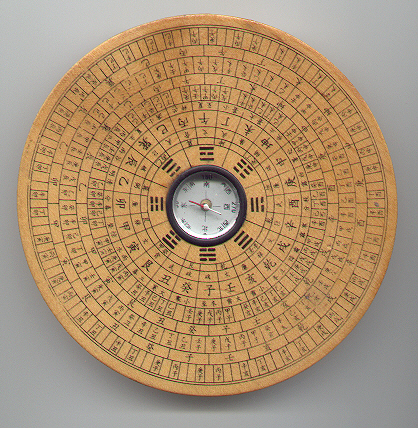
The Lepan, or
traditional geomantic compass, is used to determine portents for the living and
the dead. There are two different types, each having three parts. The former has
36 reticulations and is used to determine portents for a burial site. The later
has 9 reticulations and is used to determine the portents for the living.
Parts:
Base Plate: Earth
Dial Plate: Heaven
Magnetic Compass:
Heaven pool; pole star; points south
Reticulations:
Former: 9 x 4 = 36 reticulations for the dead
Heaven Plate:
1)
Former Trigrams of Fu
Xi
2)
Later Trigrams of Wen Wang: 9 Stars
3)
8 Positions of Baleful Spirits: determines unlucky
burial positions (24 mountains)
4)
4 and 8 Ways of Wang Zhuan: determines
auspicious position in land of the dead for good rebirth (8 major planets)
5)
9 Star and Separating the Dragon Ring: determine
lucky dragons on land or rivers surrounding site (64 hexagrams)
6)
Earth Valley Needle: suitable tombstone position
finder (changing 64 hexagrams)
7)
Yin
and Yang Dragon Ring: 10 stems/12
branches (24 fortnights of the year)
8)
24 Months, 5 Dragons (elements): determine
beneficial and hazardous elements to the deceased (28 constellations)
9)
Baleful and Evil Ring: determine spirits that may
cause misfortune or accident to the family of the deceased (360ฐ)
10)
72 Points of the Dragon veins through the Mountain
11)
Through Mountain Later Ring
Human Plate:
12)
Human Pool (stems and branches of person's horoscope)
13)
Earth Spirit of 60 Dragons (60 points of good and bad luck)
14)
Through the Earth: determines the right door for the deceased into the
spirit world
15)
Through Earth and Mountain Trigrams: the trigrams are integrated with the
dragon points in the mountain
16)
Through Earth Dragon: auspicious sites of burial
17)
Astrology Ring: checks balance (5 aspects and horoscope)
18)
Heaven Pool Adjustment Needle (yin
and yang)
19)
246ฐ
Compass Ring (auspicious river directions)
20)
28ฐ
Compass Ring (auspicious burial near rivers)
21)
37
ะ
of Deceased (the dead and qi)
22)
Lonely and Prosperous Positions of the Dead
23)
Hexagrams Reappearance (further burial advice)
24)
Stems/Branches Combine to Find 5 Elements (5 aspects of dead)
25)
12 Islands/9 Palaces
26)
Life Star Ring: ruling planet of deceased
27)
24 Mountains: determines
ะ
of sunrise in relation of grave
28)
3 Generals on Duty: determines the spirit that rules the deceased
29)
12 Gods in Command: 12 Palaces
30)
Horse Palace Ring: determines if deceased soul will wander or be content
(31 auspicious points of the soul)
31)
Horoscope of deceased
Earth Plate:
32)
Heaven Degree Ring: determines the element of the heavenly spirit (5
elements of deceased)
33)
10ฐ
of 60 Dragon Points
34)
Latitude and Longitude of site
35)
2 Branches of the Dead: dead branches left over from stems and branches
36)
28 Constellations
Later: 9 reticulations for the living
1)
8 Trigrams
2)
Symbols of 9 Stars; 12 Branches
3)
24 Mountains: 8 correspond to 4 cardinal directions
(may appear in 3 rings: heaven, earth, man); 10 Stems
4)
8 Tzu Wei Stars (in charge of Pole Star, Purple
Star)
5)
64 Hexagrams
6)
64 Hexagrams
7)
24 Solar Calendar Terms: 15ฐ of sun position
8)
28 Constellations: determine position and time of
burial
9)
360ฐ
ฉ DAOZHAN, 2005